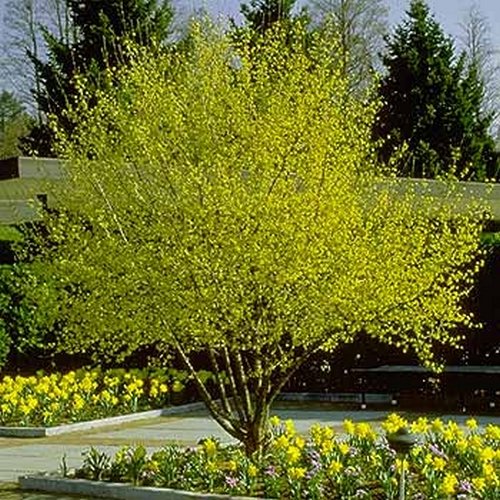

I quickly learned that propagation, by cuttings or seed, is a bit tricky. Since plants can be a bit hard to find, I fully intended to propagate the three varieties I now have on the homestead. They’re tricky to pit, and generally, the fruit are boiled in a small bit of water until the fruit falls away from the pit. The fruit are oval-shaped, with a large pit that’s firmly attached to the flesh. At that stage, the fruit is soft and sweet-tart around a large oval-shaped seed. The texture is a bit like a mushy plum that’s well past prime. Truly ripe fruit is soft, and a deep red. Even when they’re fully bright red, they’re not ready yet. The trick is, the fruit are not fully ripe until they fall from the bush. Unripe cornelian cherries are tart and astringent, but the fully ripe fruit tastes like a cross between tart cherries and cranberries. Given that, they may need protection from late frosts in colder areas like ours, we’ll see… Harvesting Cornelian Cherry The plants flower very early in the spring, even earlier than forsythia. The plants are hardy to either zone 4 or 5 depending on the cultivar. That’s good news for our heavy clay soil. If you’re planting cornelian cherry, make sure you pick a location that can handle their eventual size, even if you don’t live to see it.Ĭornelian cherries aren’t picky about soil type, and though they prefer fertile well-drained soil, they can be grown on just about anything, including dense clay.
#Cornelian cherry dogwood cornus mas full size#
Since they’re a slow-growing plant, it can take decades for them to reach full size and they have an expected productive lifespan of about 150 years. They grow to somewhere between 15 and 25 feet tall, and large bushes can be 12 feet wide. The growth habit of cornelian cherry is somewhere between a bush and a small tree.

Now the real problem, how do you grow cornelian cherry? I walked away with three plants, each about 5 feet tall, and each was covered in quarts of fruit. Since no one seemed to know anything about them, very few people bid. When I ran across three 5′ tall bushes at a plant auction, I made a point of bidding. These dogwood cherries are only just becoming popular and available in the US because of the rise in interest in backyard permaculture.Ĭornelian cherries are mentioned in just about every permaculture text I’ve ever read, but they can be tricky to find locally and they’re most commonly ordered online by permaculture enthusiasts. They’re a part of the traditional cuisines in eastern Europe, Greece and Turkey, as well as a part of traditional Chinese medicine. Cornelian cherries are the sweet-tart fruit of a particular species of dogwood (Cornus mas) and they’ve been cultivated for thousands of years.


 0 kommentar(er)
0 kommentar(er)
